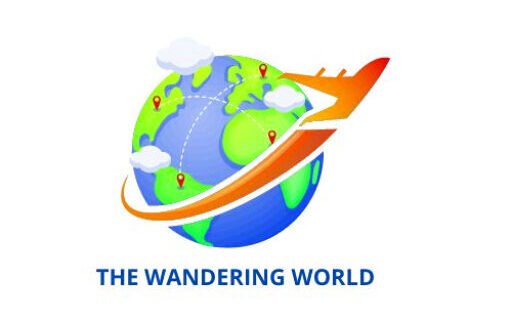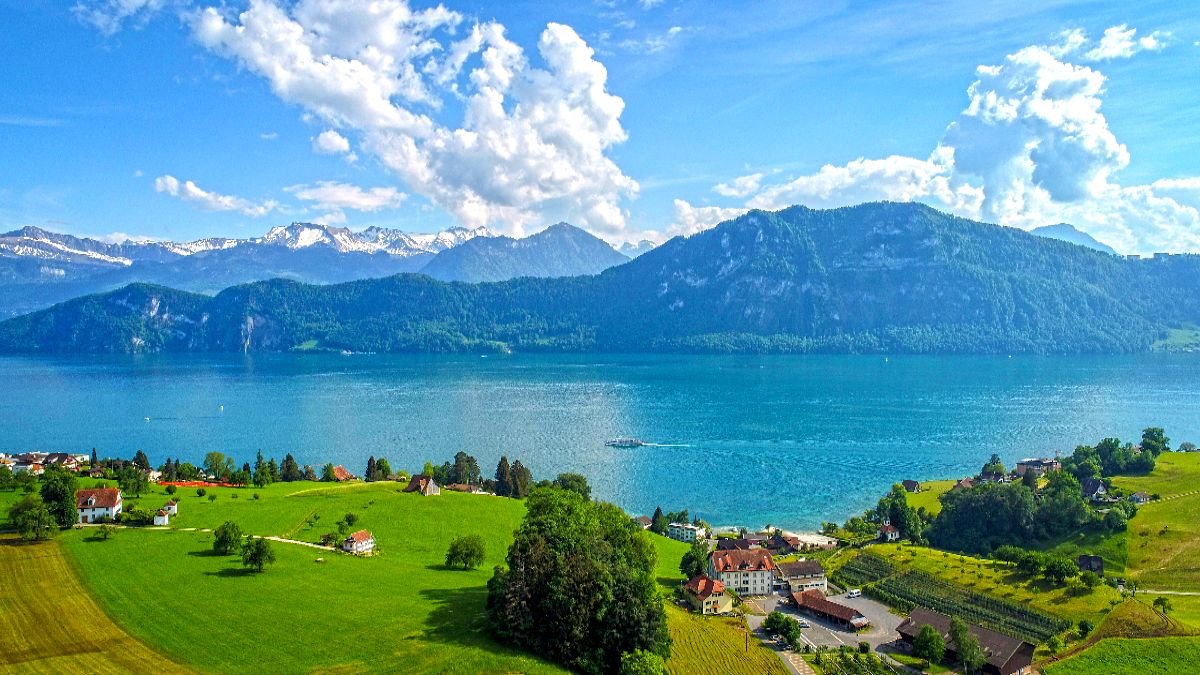Overview:
Switzerland, often referred to as the “Playground of Europe,” is a stunning country known for its breathtaking landscapes, pristine lakes, snow-capped peaks, and charming villages.
Nestled in the heart of Europe, Switzerland attracts visitors from around the world with its natural beauty, rich history, and cultural diversity.
From the vibrant cities of Zurich and Geneva to the tranquil beauty of the Swiss Alps, the country offers a diverse range of experiences that cater to every kind of traveler.
In this blog, we will explore the best 15 tourist attractions in Switzerland that you must visit.
Table of Contents
1. The Matterhorn, Zermatt

The Matterhorn is one of the most iconic mountains in the world, located in the Swiss Alps near the town of Zermatt. Its distinctive pyramidal shape makes it instantly recognizable and a must-visit for nature lovers and adventure seekers.
Historical and Cultural Significance: Standing at 4,478 meters, the Matterhorn has been a symbol of Switzerland’s rugged beauty for centuries. It gained prominence in the 19th century when it became a coveted peak for climbers. Today, it remains one of the most photographed mountains globally.
Unique Features: The Matterhorn’s snow-covered peak and dramatic appearance are breathtaking. Visitors can enjoy panoramic views of the mountain from Gornergrat or Klein Matterhorn, accessible via cable cars.
Best Time to Visit: June to September (for hiking) or December to March (for skiing).
Travel Tips:
- Transportation: Zermatt is a car-free town accessible by train from major Swiss cities like Zurich and Geneva.
- Accommodations: Choose from cozy chalets, luxury hotels, or mountain lodges in Zermatt for an authentic Alpine experience.
- Local Customs: Respect the local environment by staying on marked paths and avoiding littering. The Swiss take great pride in preserving the natural beauty of their mountains.
2. Jungfraujoch, Bernese Oberland

Known as the “Top of Europe,” Jungfraujoch is one of the highest accessible points in the Alps, offering breathtaking views of snow-capped peaks and glaciers. It’s a UNESCO World Heritage Site and a must-visit destination for anyone exploring Switzerland.
Historical and Cultural Significance: The Jungfraujoch railway station, opened in 1912, is the highest in Europe. This engineering marvel provides access to a world of eternal ice and snow.
Unique Features: The observatory and Ice Palace offer visitors a chance to experience a high-altitude wonderland. From Jungfraujoch, you can see the Aletsch Glacier, the longest glacier in the Alps.
Best Time to Visit: April to September (for clear views and pleasant weather).
Travel Tips:
- Transportation: Take the cogwheel train from Interlaken or Grindelwald to reach Jungfraujoch.
- Accommodations: Stay in Interlaken or Grindelwald for easy access to the Jungfrau region.
- Local Customs: Be mindful of altitude sickness. Move slowly and drink plenty of water to stay hydrated.
3. Lake Geneva, Geneva and Lausanne

Lake Geneva, shared by Switzerland and France, is one of the largest and most beautiful lakes in Europe. The Swiss side, bordered by the cities of Geneva, Lausanne, and Montreux, is a prime destination for relaxation and cultural experiences.
Historical and Cultural Significance: The lake has been a center of activity since Roman times and has inspired many artists, writers, and musicians, including Lord Byron and Charlie Chaplin, who lived in the region.
Unique Features: The lake’s crystal-clear waters, combined with the backdrop of the Alps, create a serene and picturesque environment. Visitors can enjoy boat rides, promenades, and vineyard tours in the surrounding Lavaux region.
Best Time to Visit: May to September (for outdoor activities and festivals).
Travel Tips:
- Transportation: Geneva and Lausanne are well-connected by train and have local transport options like buses and trams.
- Accommodations: Choose from luxury hotels along the lake’s shore or charming boutique hotels in the city centers.
- Local Customs: Dress modestly when visiting historic sites and be respectful of the local languages, French and German.
4. Château de Chillon, Montreux

Château de Chillon is a historic medieval castle located on the shores of Lake Geneva near Montreux. This well-preserved fortress is one of Switzerland’s most visited landmarks.
Historical and Cultural Significance: The castle dates back to the 12th century and served as a residence for the Counts of Savoy. Its strategic position on the lake made it a vital military stronghold.
Unique Features: Visitors can explore the castle’s dungeons, grand halls, and courtyards, all of which are steeped in history. The stunning views of Lake Geneva from the castle’s towers are not to be missed.
Best Time to Visit: March to November (for warmer weather and clear views).
Travel Tips:
- Transportation: The castle is easily accessible by train or bus from Montreux.
- Accommodations: Stay in Montreux or Vevey to explore the region’s beauty.
- Local Customs: Photography is allowed in most parts of the castle, but be respectful and avoid touching exhibits.
5. Bern Old Town, Bern

The Old Town of Bern, the capital city of Switzerland, is a UNESCO World Heritage Site. With its medieval architecture, cobbled streets, and covered arcades, it offers a glimpse into Switzerland’s rich history and culture.
Historical and Cultural Significance: Founded in the 12th century, Bern has retained its medieval charm over the centuries. The Zytglogge clock tower and the Federal Palace are iconic landmarks that symbolize the city’s historical significance.
Unique Features: The city’s unique arcades stretch for over 6 kilometers, making it one of the longest-covered shopping promenades in Europe. The Rose Garden offers panoramic views of the Old Town and the Aare River.
Best Time to Visit: April to October (for pleasant weather and outdoor events).
Travel Tips:
- Transportation: Bern is easily accessible by train from Zurich, Geneva, and other major cities. Walking is the best way to explore the Old Town.
- Accommodations: Stay in the Old Town for a charming experience or choose modern hotels near the train station.
- Local Customs: The Swiss are punctual, so be on time for appointments and guided tours. It’s customary to greet people with a polite “Grüezi” in Swiss-German.
6. Lucerne and Lake Lucerne, Lucerne

Lucerne, with its stunning lake and surrounding mountains, is one of Switzerland’s most picturesque cities. The city’s medieval charm, combined with the natural beauty of Lake Lucerne, makes it a top destination.
Historical and Cultural Significance: Lucerne has been a cultural and commercial hub since medieval times. The Chapel Bridge, built in 1333, is one of the oldest wooden bridges in Europe and a symbol of the city.
Unique Features: The combination of the lake and mountains offers numerous recreational opportunities, from boat cruises to mountain excursions like Mount Pilatus and Mount Rigi.
Best Time to Visit: May to October (for outdoor activities) or December to February (for winter sports).
Travel Tips:
- Transportation: Lucerne is accessible by train from Zurich, and the city is best explored on foot or by boat.
- Accommodations: Choose from lakeside hotels with stunning views or historic inns in the Old Town.
- Local Customs: Try to use Swiss Francs for local transactions, as some places may not accept Euros.
7. Zurich’s Old Town (Altstadt)

Zurich’s Old Town, known as “Altstadt,” is the historical heart of Zurich, the largest city in Switzerland. With cobbled streets, ancient churches, and charming medieval buildings, the Old Town captures the essence of Zurich’s rich heritage and culture.
Historical and Cultural Significance: Dating back to the Roman era, Altstadt is a living testimony of Zurich’s transformation through the centuries. The narrow alleys, the iconic Grossmünster and Fraumünster churches, and Lindenhof Hill are symbolic landmarks that narrate stories of Zurich’s political and religious past.
Unique Features: Stroll through the winding streets of the Old Town to discover quaint shops, traditional cafés, and hidden courtyards. The medieval architecture contrasts beautifully with contemporary art galleries and chic boutiques, reflecting Zurich’s fusion of old and new.
Best Time to Visit: Visit from April to October for the best weather. The summer months are ideal for exploring the streets, and December is perfect for experiencing the festive Christmas markets.
Travel Tips:
- Transportation: Zurich’s Old Town is best explored on foot. The city’s efficient tram system also connects various parts of the Old Town with other areas of Zurich.
- Accommodation: Stay at one of the boutique hotels or historic inns located within the Old Town for an immersive experience.
- Local Customs: Respect the local culture by being mindful of noise levels, especially at night. Exploring the churches, dress modestly.
8. Rhine Falls
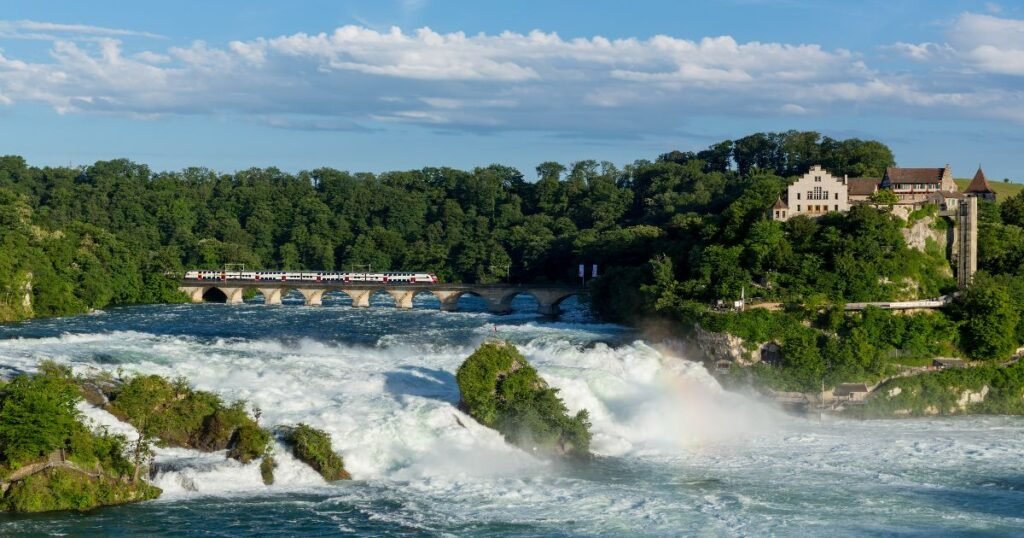
Rhine Falls, the largest waterfall in Europe, is a magnificent natural wonder located near the town of Schaffhausen in northern Switzerland. The falls are a breathtaking spectacle, attracting nature lovers and thrill-seekers alike.
Historical and Cultural Significance: Rhine Falls has been a popular tourist attraction for centuries. The falls have witnessed numerous historical events, including battles and the construction of nearby castles, such as Schloss Laufen, which offers panoramic views of the cascading waters.
Unique Features: Standing 23 meters high and 150 meters wide, Rhine Falls offers boat rides that take you close to the thundering waters. Visitors can also explore nearby observation platforms and take in the awe-inspiring views.
Best Time to Visit: Visit from June to August when the water levels are at their highest, creating a dramatic display. Early mornings or late evenings are best for avoiding crowds.
Travel Tips:
- Transportation: Take a train to Neuhausen Rheinfall or Schaffhausen stations, both within walking distance of the falls.
- Accommodation: Nearby hotels in Schaffhausen or Stein am Rhein offer a comfortable stay and easy access to the falls.
- Local Customs: Respect the natural environment by staying within designated areas and avoiding littering. The falls can get slippery, so wear appropriate footwear.
9. Grindelwald and the Eiger
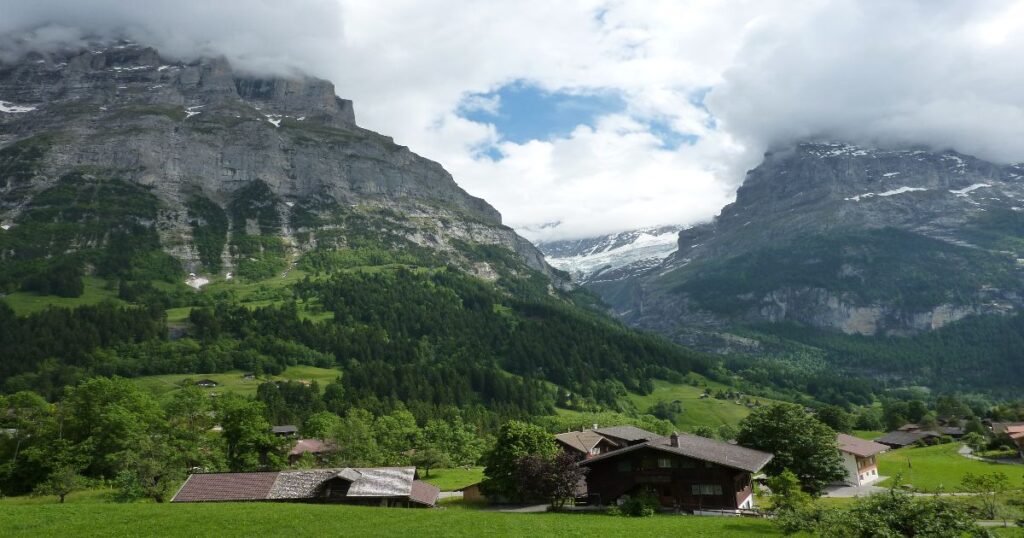
Nestled in the Bernese Alps, Grindelwald is a picturesque village known for its stunning scenery and proximity to the majestic Eiger mountain. It’s a haven for adventure enthusiasts and those seeking a quintessential alpine experience.
Historical and Cultural Significance: Grindelwald has been a mountaineering destination since the 19th century. The Eiger’s north face, notorious for its challenging climbs, has been the ultimate test for climbers, earning the nickname “Murder Wall.”
Unique Features: Grindelwald’s unique location offers panoramic views of the Eiger, Mönch, and Jungfrau mountains. The First Cliff Walk and the cable car rides to the Jungfraujoch provide unparalleled vistas of the surrounding peaks and glaciers.
Best Time to Visit: Visit from June to September for hiking and summer activities, or from December to February for winter sports like skiing and snowboarding.
Travel Tips:
- Transportation: Grindelwald is accessible by train from Interlaken. The region’s extensive network of cable cars and trains makes it easy to explore.
- Accommodation: Choose from cozy chalets, hotels, or mountain lodges in Grindelwald for a unique stay.
- Local Customs: Engage with locals and respect the mountain environment by sticking to marked trails and keeping noise levels low.
10. Montreux
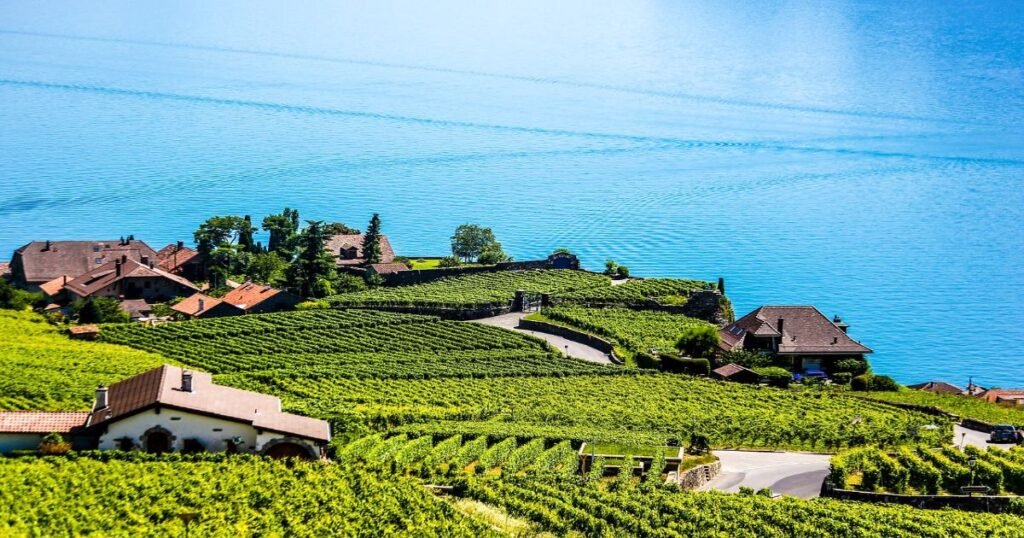
Montreux, located on the shores of Lake Geneva, is a charming town known for its music festivals, serene lakeside promenades, and the stunning Lavaux farm yards, a UNESCO World Heritage Site.
Historical and Cultural Significance: Montreux has been a cultural hub for centuries, attracting artists, musicians, and writers.
Unique Features: The scenic beauty of Montreux, combined with the terraced vineyards of Lavaux, creates a breathtaking backdrop.
Best Time to Visit: Visit from April to October when the vineyards are lush, and the weather is ideal for wine tours and lakeside strolls.
Travel Tips:
- Transportation: Montreux is easily accessible by train from Geneva. Use the train or local buses to explore the vineyards.
- Accommodation: Choose from lakefront hotels or vineyard guesthouses for a tranquil stay.
- Local Customs: Respect the farmyards by staying on marked paths and seeking permission to enter into yards.
11. Swiss National Park

Located in the Engadine Valley, the Swiss National Park is Switzerland’s only national park and one of the oldest in Europe. It’s a paradise for nature enthusiasts and wildlife lovers.
Historical and Cultural Significance: Established in 1914, the park is dedicated to preserving the natural ecosystem. It provides a sanctuary for numerous species of flora and fauna and serves as a living museum of Alpine biodiversity.
Unique Features: The park’s 170 square kilometers of untouched wilderness is home to ibex, chamois, marmots, and golden eagles. Explore over 80 kilometers of hiking trails and witness the park’s diverse landscapes, from dense forests to rocky peaks.
Best Time to Visit: Visit from June to September when the hiking trails are open, and the weather is favorable for outdoor activities.
Travel Tips:
- Transportation: The park is accessible by train to Zernez, from where buses connect to the park’s entrance.
- Accommodation: Stay in Zernez or nearby villages, as there is no accommodation within the park itself.
- Local Customs: Follow the “leave no trace” principle, respect wildlife, and stay on designated trails.
12. St. Moritz

St. Moritz is a world-renowned resort town known for its glamorous lifestyle, luxury shopping, and winter sports. It has hosted the Winter Olympics twice and is a playground for the rich and famous.
Historical and Cultural Significance: With a history dating back to the 19th century as a spa resort, St. Moritz has been synonymous with luxury and sophistication. The town’s mineral springs were known to the Celts and Romans.
Unique Features: St. Moritz is famous for its high-end resorts, gourmet restaurants, and pristine ski slopes. The frozen Lake St. Moritz hosts polo matches, horse races, and the unique “White Turf” event in winter.
Best Time to Visit: Visit from December to March for winter sports and summer months for hiking and lake activities.
Travel Tips:
- Transportation: St. Moritz is accessible by train or car. The Bernina Express offers a scenic journey through the Alps.
- Accommodation: Choose from luxury hotels or charming mountain lodges.
- Local Customs: St. Moritz is known for its exclusivity, so be prepared for a premium experience.
13. Gruyères Castle

Perched atop a hill, Gruyères Castle is a medieval fortress offering panoramic views of the surrounding countryside. The town of Gruyères is synonymous with the famous Gruyère cheese.
Historical and Cultural Significance: Built in the 13th century, the castle has been a symbol of power for centuries. It now serves as a museum, showcasing collections of paintings, sculptures, and historical artifacts.
Unique Features: Explore the castle’s beautifully restored rooms, gardens, and the multimedia show that tells the story of the region. Don’t forget to visit the nearby cheese factory to learn about Gruyère cheese production.
Best Time to Visit: Visit from April to October when the weather is mild and the gardens are in bloom.
Travel Tips:
- Transportation: Take a train to Gruyères village and walk up to the castle.
- Accommodation: Stay in the village’s quaint guesthouses for a more authentic experience.
- Local Customs: While visiting the castle and cheese factory, respect local customs and traditions, and consider sampling local cheeses and other delicacies.
14. Aletsch Glacier

The Aletsch Glacier is the longest glacier in the Alps, stretching over 23 kilometers. It is a natural wonder and a UNESCO World Heritage Site, attracting adventurers and nature enthusiasts for its breathtaking beauty and challenging terrain.
Historical and Cultural Significance: Aletsch Glacier has been a subject of scientific research for centuries due to its immense size and role in studying climate change. It also holds cultural significance for the local Alpine communities, representing the harmony between humans and nature.
Unique Features: The glacier’s stunning ice flows and crevasses are best viewed from the Bettmerhorn or Eggishorn viewpoints. Guided tours allow visitors to walk on the glacier, offering a unique perspective of this frozen giant.
Best Time to Visit: Visit from June to September for hiking and glacier tours, or from December to March for winter sports in the surrounding region.
Travel Tips:
- Transportation: Take a train to Brig or Fiesch, then a cable car to Bettmeralp or Eggishorn for the best viewpoints.
- Accommodation: Stay in nearby villages such as Bettmeralp or Fiesch for easy access to the glacier.
- Local Customs: Respect the fragile alpine environment and stick to designated paths during hikes or glacier walks.
15. Lauterbrunnen Valley

Often referred to as the “Valley of 72 Waterfalls,” Lauterbrunnen Valley is one of the most picturesque and tranquil destinations in Switzerland. Surrounded by towering cliffs and dotted with charming villages, the valley is a perfect escape for nature lovers and hikers.
Historical and Cultural Significance: Lauterbrunnen Valley has inspired poets, writers, and artists for centuries, including J.R.R. Tolkien, who drew inspiration from his Middle-earth landscapes. The valley is home to small traditional Swiss villages like Wengen and Mürren, preserving the region’s cultural heritage.
Unique Features: The valley is known for its stunning waterfalls, such as Staubbach Falls and Trümmelbach Falls. The numerous hiking trails and cable cars provide spectacular views of the valley, nearby mountains, and glaciers.
Best Time to Visit: Visit from May to October for hiking and sightseeing, or from December to February for skiing and winter sports in nearby resorts.
Travel Tips:
- Transportation: The valley is accessible by train from Interlaken. Use local trains and cable cars to reach villages like Wengen and Mürren.
- Accommodation: Choose from traditional guesthouses or mountain lodges for an authentic experience.
- Local Customs: Be respectful of the local way of life in small villages, and avoid making excessive noise to preserve the tranquil atmosphere.
Also Read: Best 14 Tourist Attractions in Germany
Conclusion
Switzerland’s diverse landscape, rich cultural heritage, and unparalleled natural beauty make it one of the most sought-after destinations in the world.
From the majestic Matterhorn and the serene Lake Geneva to the charming villages and ancient castles, each of the top 15 attractions offers a unique glimpse into what makes this country so special.
With its efficient transportation, welcoming accommodations, and pristine environment, Switzerland is truly a destination worth exploring.
Whether you’re an adventure seeker, a history buff, or simply in search of tranquility, Switzerland has something for everyone.
FAQs
1. What is the best time to visit Switzerland?
The best time to visit Switzerland depends on your interests. For summer activities and sightseeing, visit between June and September. For winter sports, December to March is ideal.
2. How can I get around Switzerland?
Switzerland has an extensive and efficient public transportation system, including trains, buses, and cable cars. The Swiss Travel Pass offers unlimited travel on public transportation for a set number of days.
3. Are there any travel restrictions or customs I should be aware of?
Respect local customs and traditions, such as maintaining cleanliness and minimizing noise. Always stay on marked trails in natural areas and follow rules in cultural and historical sites.
4. Is Switzerland expensive to visit?
Switzerland is known for its high cost of living. However, you can find budget-friendly options for accommodation, food, and activities if you plan ahead.
5. What are some must-try foods in Switzerland?
Try traditional dishes like fondue, raclette, rosti, and Swiss chocolate. Each region offers unique local specialties that reflect the country’s diverse culinary heritage.
6. What is the most convenient way to travel around Switzerland?
Switzerland has an excellent public transportation system, including trains, buses, and boats. The Swiss Travel Pass offers unlimited travel on the network and is ideal for tourists. Alternatively, renting a car gives you more flexibility to explore remote areas.
7. Are there any special permits needed for visiting certain attractions?
Most tourist attractions in Switzerland do not require special permits. However, permits may be required for specific activities like mountaineering or hiking in restricted areas. Always check with local tourist offices for updated information.
8. Is Switzerland an expensive country to visit?
Yes, Switzerland is known for being one of the most expensive destinations in Europe. However, with careful planning, budget travelers can find affordable accommodations, food options, and transportation choices. The Swiss Travel Pass, for example, helps save costs on transport.
9. What languages are spoken in Switzerland?
Switzerland has four official languages: German, French, Italian, and Romansh. German is the most widely spoken language, particularly in central and eastern regions. French is spoken in the western part of the country, and Italian is predominant in the southern region of Ticino.
10. Can I use Euros in Switzerland?
Although Switzerland is not part of the European Union and has its own currency, the Swiss Franc (CHF), some establishments near the borders and major tourist areas may accept Euros. However, it’s recommended to use Swiss Francs for local transactions to avoid unfavorable exchange rates.
11. What are some must-try dishes in Switzerland?
Switzerland is known for its cheese and chocolate. Don’t miss out on trying traditional dishes like veg Fondue, Raclette, and Rösti. For dessert, indulge in Swiss chocolate or Meringue with cream.
12. How safe is it to travel in Switzerland?
Switzerland is one of the safest countries to travel in, with a low crime rate. However, it’s always wise to stay vigilant and take usual precautions, especially in crowded places or tourist spots.
